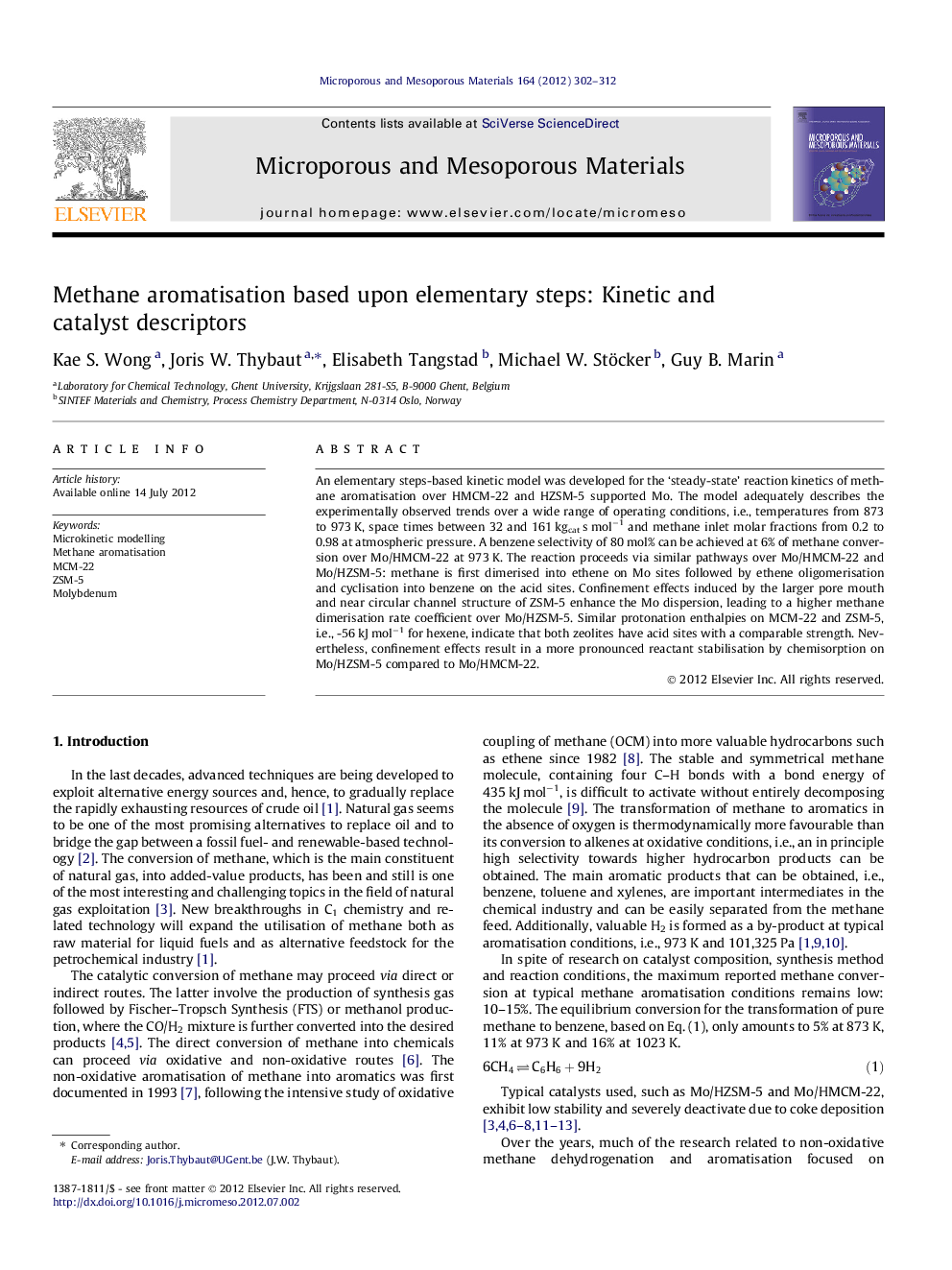| کد مقاله | کد نشریه | سال انتشار | مقاله انگلیسی | نسخه تمام متن |
|---|---|---|---|---|
| 74102 | 49080 | 2012 | 11 صفحه PDF | دانلود رایگان |

An elementary steps-based kinetic model was developed for the ‘steady-state’ reaction kinetics of methane aromatisation over HMCM-22 and HZSM-5 supported Mo. The model adequately describes the experimentally observed trends over a wide range of operating conditions, i.e., temperatures from 873 to 973 K, space times between 32 and 161 kgcat s mol−1 and methane inlet molar fractions from 0.2 to 0.98 at atmospheric pressure. A benzene selectivity of 80 mol% can be achieved at 6% of methane conversion over Mo/HMCM-22 at 973 K. The reaction proceeds via similar pathways over Mo/HMCM-22 and Mo/HZSM-5: methane is first dimerised into ethene on Mo sites followed by ethene oligomerisation and cyclisation into benzene on the acid sites. Confinement effects induced by the larger pore mouth and near circular channel structure of ZSM-5 enhance the Mo dispersion, leading to a higher methane dimerisation rate coefficient over Mo/HZSM-5. Similar protonation enthalpies on MCM-22 and ZSM-5, i.e., -56 kJ mol−1 for hexene, indicate that both zeolites have acid sites with a comparable strength. Nevertheless, confinement effects result in a more pronounced reactant stabilisation by chemisorption on Mo/HZSM-5 compared to Mo/HMCM-22.
Figure optionsDownload as PowerPoint slideHighlights
► Microkinetic model for methane aromatisation was developed.
► Reaction path analysis for Mo/HMCM-22 and Mo/HZSM-5.
► Identification of kinetic and catalyst descriptors.
Journal: Microporous and Mesoporous Materials - Volume 164, 1 December 2012, Pages 302–312